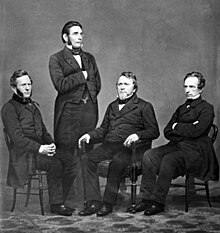Harper's Weekly
May 7, 1859
Original magazine
Large format 12X16" . Inside News and prints: A Tale of Two Cities begins by Charles Dickens; Hon. Sickles is acquitted for killing his wife's lover; New troubles in Utah; 8 vignettes of a pictorial history of Howe's journey to Pike's Peak in search of a rapid fortune; Count Cavour; The Prince of Wales; The Paraguay expeditions - 4 illustrations including lassoing bulls at San Jose and the Gaucho Dance;
Harper's Weekly, A Journal of Civilization was an American political magazine based in New York City. Published by Harper & Brothers from 1857 until 1916, it featured foreign and domestic news, fiction, essays on many subjects, and humor, alongside illustrations. It carried extensive coverage of the American Civil War, including many illustrations of events from the war. During its most influential period, it was the forum of the political cartoonist Thomas Nast.
History[edit]
Inception[edit]
Along with his brothers James, John, and Wesley, Fletcher Harper began the publishing company Harper & Brothers in 1825. Following the successful example of The Illustrated London News, Harper started publishing Harper's Magazine in 1850. The monthly publication featured established authors such as Charles Dickens and William Makepeace Thackeray, and within several years, demand for the magazine was great enough to sustain a weekly edition.[1]
In 1857, his company began publishing Harper's Weekly in New York City.[1] By 1860 the circulation of the Weekly had reached 200,000. Illustrations were an important part of the Weekly's content, and it developed a reputation for using some of the most renowned illustrators of the time, notably Winslow Homer, Granville Perkins, Porte Crayon, and Livingston Hopkins.
Among the recurring features were the political cartoons of Thomas Nast, who was recruited in 1862 and worked with the Weekly for more than 20 years. Nast was a feared caricaturist, and is often called the father of American political cartooning.[2] He was the first to use an elephant as the symbol of the Republican Party.[3] He also drew the legendary character of Santa Claus; his version became strongly associated with the figure, who was popularized as part of Christmas customs in the late nineteenth century.
Civil War coverage[edit]
Harper's Weekly was the most widely read journal in the United States throughout the period of the Civil War.[4][5
Full issues are nearly impossible to find. .
Over One Million Magazines in stock. In the trade since 1976. Visit us at millionmagazines.
Chosen Reflections/Million Magazines, Kaufman Texas 75142



